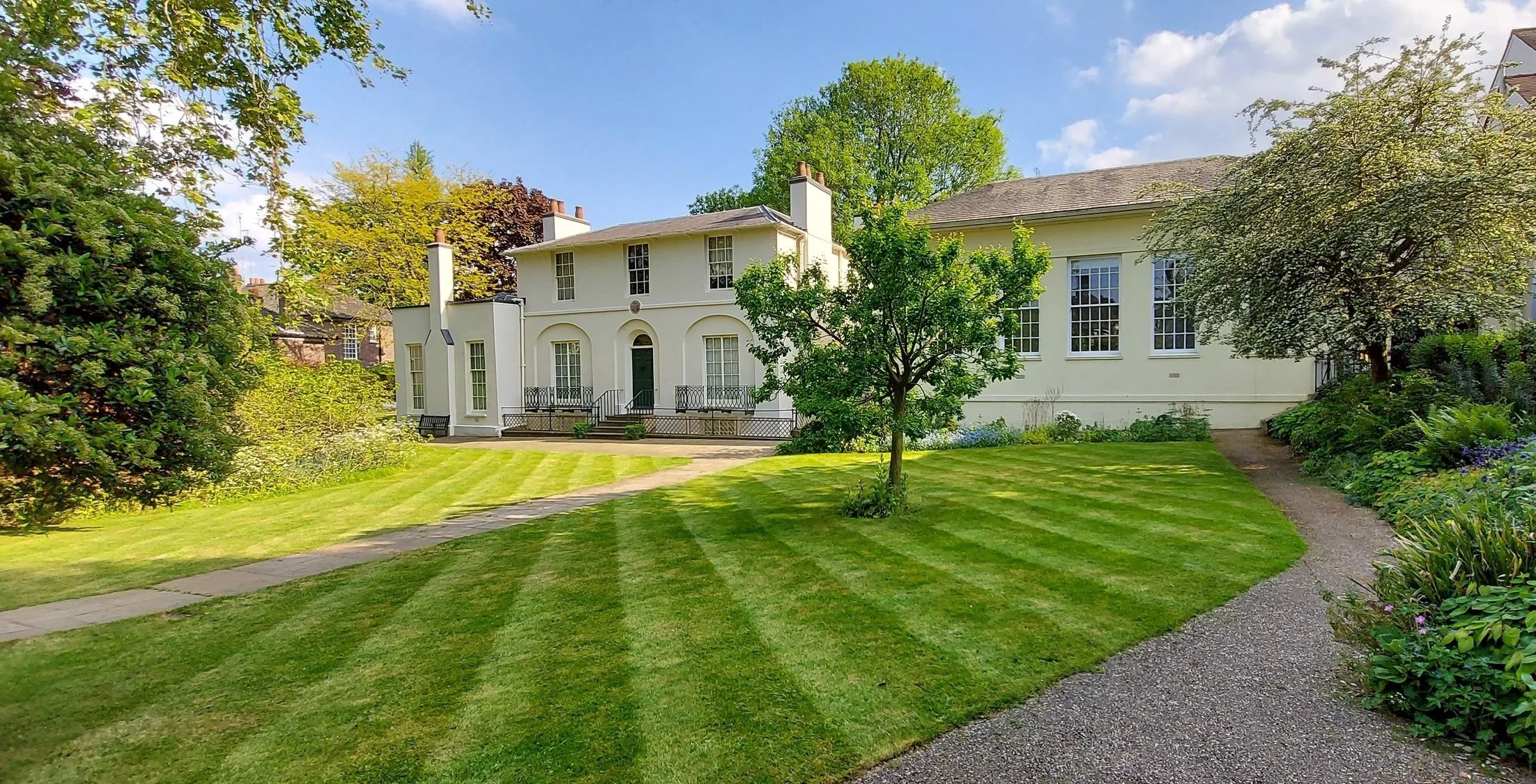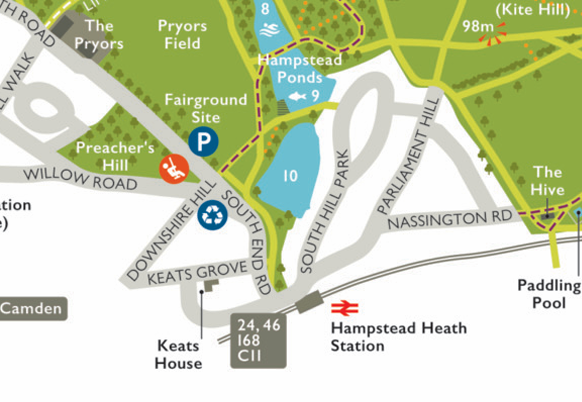Keats House Garden
Keats House Garden is a historic garden located just North West of Hampstead Heath Overground station. The garden surrounds Keats House which is open as a museum managed by the City of London Corporation. This is where the English Romantic poet, John Keats, lived while he wrote some of his most famous and loved work. His poem ‘Ode to a Nightingale’ was written in 1819 under a plum tree in this garden.
The garden itself is managed by a small group of dedicated volunteers working with Heath Hands to conserve the beauty of this historic space.
Anyone can come to visit the garden for free, a ticket to go inside the house can be purchased when you visit. Tour information on the City of London website.
Keats’ time in the house:
The house was built between 1814-1816 as two semi-detached houses known at the time as Wentworth Place.
Keats moved into one side of the house with his friend Charles Brown in 1818 to become a full-time poet.
It was during this time that he fell in love with and became engaged to Fanny Brawne who lived in the house next door.
Although he only lived in the house for a few years they were some of his most productive.
While living in the house Keats wrote some of his most famous work including: Ode to Psyche, Ode on Melancholy and Ode To A Nightingale.
Keats left the house in 1820 to move to Italy for a warmer climate after discovering he had tuberculosis .
He died of tuberculosis in Rome in 1821, at the age of 25.
Keats Mulberry tree:
The reclining Black Mulberry tree is a very distinctive feature in Keats garden.
The ancient fruit tree is over 200 years old and thought to be a remnant of an old orchard that used to be on the grounds before the house was built.
In 2022 it was one of 70 trees nationwide to be selected as part of the Queen’s ‘Green Canopy’.
Heath Hands’ Involvement:
In 2024 Heath Hands took control of the management of Keats Garden from the City of London Corporation.
We have a small and dedicated group of volunteers who kindly give a few hours every week to look after this beautiful and historical garden.
The main focus when managing this space is maintaining a period garden, with mainly native plants chosen to suit the site.





